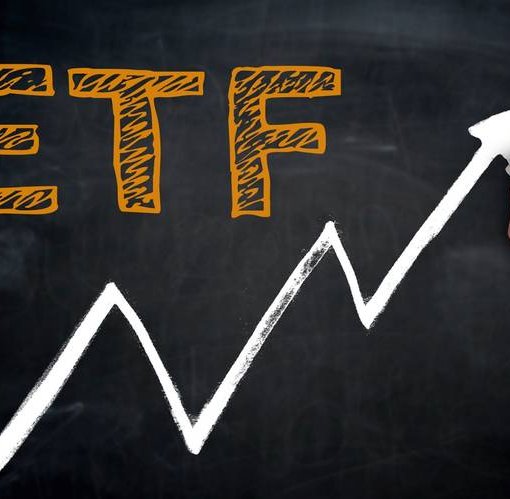Top Stock Metrics
In this article, we are going to open up the Stocks category with looking at what are some of the top stock metrics that I look at when purchasing shares of a company. This is not an extensive list, but gives you an understanding of my top metrics. Use them or not, at least you will know what they are. If you are new to the site, please check out the one year goal for inSIDEvesting!
#1 Earnings per Share (EPS)
A quick summary of the EPS is how much the company makes divided by the common stock shares on the market. Looking at this number can tell you multiple things. Lets break down a couple things that you can tell just by looking at the EPS.
- Profitability. First of all, a positive EPS will tell you if the company is profitable. The earnings are listed as the net income. Net income, very generally speaking, is the income minus expenses. If the EPS is negative, that means the company’s expenses are greater than the income.
- Share Volume. This is more generally speaking. If you know a company is incredibly profitable, such as Apple, Google, or Microsoft, looking at the EPS will tell you if they have a lot of shares out there. For example, the EPS for each company is 4.45, 75.04, and 7.34 respectively. Looking at these three numbers, I can assume that google has the least amount of shares outstanding (I am correct).
There is one thing that EPS cannot tell you. It cannot tell you if the company is successful. You may or may not know that corporations are incredibly versed at not paying taxes or cutting their incomes down significantly to reduce the tax impact. Regardless, there are many companies who are great companies with a negative EPS. A solid example of this is Tesla. Though currently listing an EPS of 1.0, for the longest time, the EPS was negative. Another prime example is Virgin Galactic (ticker: SPCE). Richard Branson just was the first billionaire to go to space using Virgin Galactic. The EPS for this company is -1.75. This shows that just because the earnings are negative, does not mean the company is doomed.
#2 Price Per Earnings (P/E or PE Ratio)
The PE ratio takes the EPS one step further. It shows how investors feel about the stock. The stock price is typically a great indicator on how the stock (not company) is doing. The PE ratio is the indicator showing how investors feel about the earnings. This is calculated by dividing the current stock price by the EPS. This tells me how much an investor is willing to pay for one dollar of the company’s earning. Lets consider Apple with the 4.45 EPS. The stock price at the moment is $148.41. This means the P/E is 33.35, meaning an investor is willing to pay $33.35 for $1 of the companies earnings. Typically, investors will pay more if they feel something big is around the corner.
#3 Price Per Book (P/B or PB Ratio)
This one is a little unorthodox and might draw some criticism, but hear me out. This ratio is the stock price divided by the value of the companies Asset column per share. This is the accounting asset, not the ones listed in Rich Dad Poor Dad. This is pretty much saying how much $1 of the company costs on the market. Lets go back to Apple. Their PB ratio is 35.41. This means it cost $35.41 to for each dollar of assets Apple owns. Google and Microsoft are 7.77 and 16.02 respectively. For smaller companies, this number can give investors piece of mind that in the event the company tanks, they may get some or all of their money back. A P/B less than 1 means that each share is worth more than the asset equivalent in the company.
#4 Price to Earning's Growth (PEG Ratio)
In case the PE ratio wasn’t enough, the PEG is used to show future earning growth instead of just looking at the current EPS. This ratio looks at the history of the company. How has the company grown in the past? This is very effective for comparing multiple companies to gauge which one will be a better investment in the future. This ratio is calculated by taking the PE ratio and dividing it by the growth rate of its EPS year after year. The lower the PEG, the better deal you’re getting based on the past. Again, looking at Apple, Google, and Microsoft. The current PEG ratios for each are 2.27, 1.53, and 2.76 respectively. Once again, Google has the better numbers.
#5 Dividend Yield
This one is another metric that might cause contention; however, this is something I always consider when looking at a new company’s stock. For those who are not aware of what dividends are, let me explain. A dividend is an amount that a company pays to its share holders on a timely basis, usually quarterly. This number is listed two ways, by the yield percentage and the dollar value per share. If it was a $100 share at a 1% yield then it would be listed as $1.00(1%) Consider this the passive income for the stock you purchased. For example, say you owned 1 share of Apple, Google, and Microsoft. The dividend yields are $0.88(0.61%), 0, and $2.24 (0.78%) respectively. This means, if you had one share of each, you would get 0.88+2.24 = $3.12 every year just because you owned the stock. If you have the dividends reinvested, then they will compound at a decent rate.
One thing to note is how Google did not have a dividend. What does that mean? Well, there are many reasons that companies don’t offer dividends. Many companies that are up and coming companies don’t offer dividends because they are reinvesting that money into a new venture. This may further increase their stock price, so investors find it worth it. Not having a dividend is not a red flag, just something I consider. However, there are some red flags you should be aware of.
Get Started Today!
Getting started in stock investing is easy and free! There are no sign up fees, registration fees, just go to Robinhood, sign up, and start your research. By using THIS LINK, you will get a free stock valued up to $500! Talk about a great way to start your investing journey!




